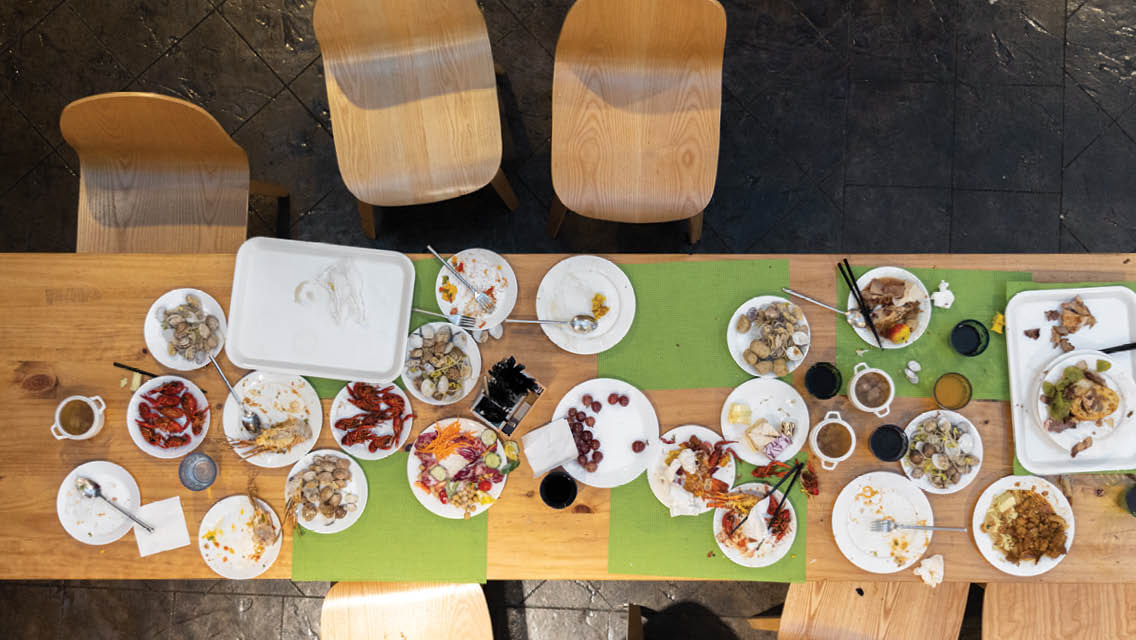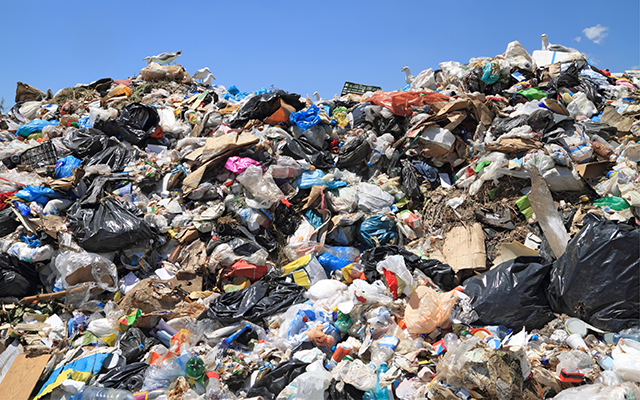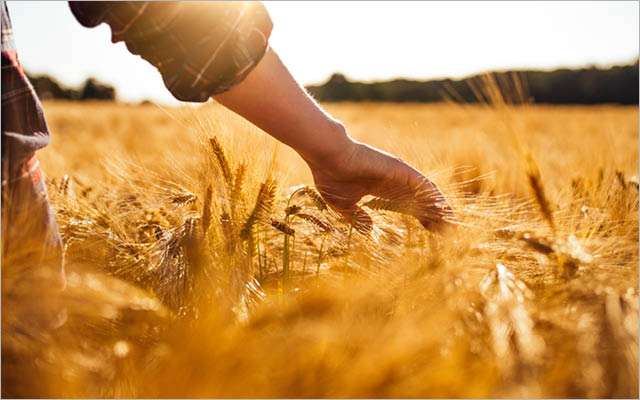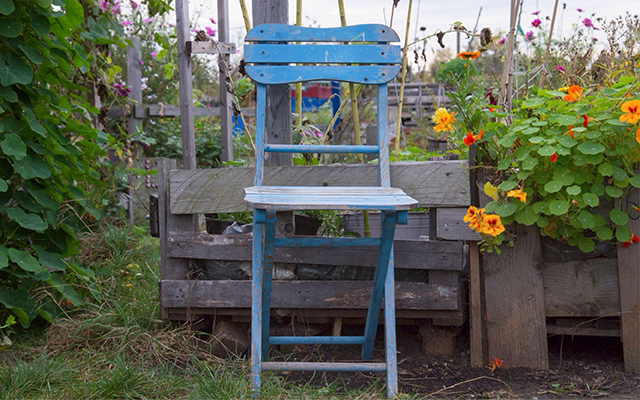Tippi Thole’s concerns about food waste stem from her obsession with trash.
“I’d always considered myself an environmentalist and thought I was doing everything I could to protect the planet,” says the 44-year-old Montreal-based graphic designer. But in 2017, when she learned about the enormous scale of plastic pollution, she was inspired to take more decisive action.
“I decided to stop buying and using plastic,” she says. “I felt like I couldn’t in good conscience continue throwing so much away and that the most reasonable place to make changes was at home with my son.”
This commitment had a powerful impact on all the waste she produced. Her trash, recycling, and, perhaps most surprisingly, her food waste have all shrunk considerably.
That last item matters. Food waste is a larger problem than most of us realize. At least one-third of all globally produced food is thrown out each year — some put the figure closer to 40 percent — with households in wealthier countries tossing away the most.
Meanwhile, climate change, low and lost wages, and the ongoing effects of the coronavirus pandemic are leaving more people facing food insecurity, making the specter of food waste particularly hard to stomach.
Some countries have begun to successfully address the issue. France, Canada, and the Netherlands rank highest among developed nations in minimizing food waste and food loss — the unintended waste of food during harvest, production, or transport.
Yet in the United States, we continue to toss out more than 200 pounds of food per person each year — more than residents of any other wealthy country. That amounts to about 30 to 40 percent of the food every household purchases.
All that wasted food has environmental impacts. Decomposing food in landfills worldwide produces 3.6 billion tons of methane each year; it’s the third-largest source of methane emissions in the United States. (Methane is a greenhouse gas that’s many times more potent than carbon dioxide.)
It can be easy to feel overwhelmed by all this — especially because many of us have no idea we’re wasting so much food. But awareness followed by small, daily choices can make a big difference.
“What I’ve noticed is that once you find a solution, adopting and maintaining the system is pretty easy,” Thole says, who documents her waste-reduction discoveries on her blog, Tiny Trash Can.
“The biggest barrier is just not realizing that you have choices.”
A Systemic Problem
Why do we waste so much food? From marketing gimmicks to confusing food-expiration labels (see “Question the Label” at the end of this article), our system is set up for waste, notes food-justice advocate and New York University professor Marion Nestle, PhD.
The roots of food waste can be traced as far back as the early days of agrarian capitalism, when humans began growing surplus crops to sell at markets. Today, commercial food production is often less focused on feeding people than on maximizing profits.
“Our agricultural subsidies promote food waste by encouraging food overproduction,” explains Nestle. “This causes things like corn to be grown where it never should be.”
When it comes to federally subsidized crops like corn, there’s also a connection between overproduction and processed food, a.k.a “value-added” products. Small-scale value-adding — like making and selling marinara from a banner crop of tomatoes — is a way for farmers to use up excess crops and increase their profits. But turning surplus corn into high-fructose corn syrup for soda and chips benefits food manufacturers, while hurting public health.
A global economy and lengthened supply chains have also made nearly every type of food available all over the world year-round. So, while it may be great to find Indian mangoes in Germany, Washington-state apples in Indonesia, and Mexican avocados everywhere, food waste and loss are unfortunate byproducts of this expanded availability.
Globally, at least 1.3 billion tons of food are lost on the journey from farms to forks each year. Perishables such as produce, dairy, and meat are particularly vulnerable. Damage, contamination, microorganisms, pests, and mismanaged temperature controls all pose threats.
“[More waste is produced by] natural disasters, insect pests, and fungal attacks, as well as demands for perfect produce,” notes Nestle.
And food loss is aggravated when demand slumps at harvest time. Growers will often leave crops in the field because selling them won’t cover the labor and transport costs of bringing them to market. Many Idaho potato farmers, for example, plowed their crops under during the early stages of the coronavirus pandemic as restaurants, schools, hotels, and other large-scale commercial buyers closed down.
Then there’s weather. Late plantings or soggy conditions can force farmers to leave unharvested crops in the ground.
While Nestle notes that food waste doesn’t contribute directly to food insecurity — that has more to do with economic inequity — the notion of wasting so much food when so many are hungry is a decidedly unpalatable one.
The Cumulative Costs
Ultimately, all of this waste comes with a high cost — individually, collectively, and environmentally. A 2020 University of Pennsylvania study found that Americans discard $240 billion worth of food each year.
“Based on our estimation, the average American household wastes 31.9 percent of the food it acquires,” says Edward Jaenicke, PhD, professor of agricultural economics. “More than two-thirds of households in our study have food-waste estimates of between 20 percent and 50 percent. Yet even the least wasteful household wastes 8.7 percent of the food it acquires.”
Wealthier households appear to toss more food than those working with leaner budgets, while larger households tend to waste less food. “More people means leftover food is more likely to be eaten,” Jaenicke explains.
Our planet pays a price for all this food waste, too. Twenty-eight percent of the earth’s agricultural land is used to produce food that goes to waste. Meanwhile, clearing land for agriculture is a major cause of deforestation, which increases greenhouse gas emissions, eliminates wildlife habitats, and destroys ecosystems.
Food production requires substantial amounts of water, so throwing food away also wastes water supplies. Freshwater is rapidly diminishing due to warming global temperature, and demand is rising along with population. Agriculture consumes about 70 percent of freshwater annually, which means 24 percent of the water used to grow food is wasted when we don’t consume what we grow.
Greenhouse gases are generated at each stage of food production, accounting for about 8 percent of global emissions. Growing and transporting wasted food emits as much carbon pollution as 39 million passenger vehicles.
Meanwhile, rotting food in landfills emits methane, which has more than 25 times the global-warming potential of carbon dioxide over a 100-year period. Microbes in municipal landfills and sewage treatment centers pump out about 15 percent of the annual U.S. methane footprint.
“Many people don’t realize that landfills are very different from compost piles, and things put in them don’t biodegrade,” Thole says. “In fact, landfills are designed to keep things from decomposing.”
Solution Focused
Some governments have taken legislative steps to minimize food waste. France, ever the gastronomical vanguard, is the first nation to require supermarkets to redistribute excess food to organizations that address food insecurity.
Vermont legislators in 2020 prohibited residents from sending household food scraps to landfills. Instead, they must compost their scraps, feed them to farm animals, or have them hauled to municipal compost sites.
California, Connecticut, Massachusetts, and Rhode Island also restrict the amount of organic waste that can be added to landfills. Other states offer tax breaks to farmers and businesses that donate to food shelves instead of discarding their leftovers.
San Francisco and Seattle have enacted laws similar to Vermont’s. “The trend in big cities has been to offer curbside compost pickup programs, especially in densely populated areas,” says Meredith Niles, PhD, assistant professor of nutrition and food sciences at the University of Vermont.
Municipal compost programs not only divert food scraps from landfills, but the anaerobic composting process also generates carbon dioxide rather than the more harmful methane.
Still, “there isn’t a one-size-fits-all for how we manage food waste,” Niles adds. She led a study that found that 72 percent of Vermonters were already composting at home or feeding food scraps to livestock. “In more rural areas, people may already be managing their food waste in a way that leaves it out of the landfills.”
Others are finding ways to go beyond compost. Culinary stars like James Beard Award–winning chef Dan Barber are reimagining fine dining by turning food scraps into gourmet meals. Among his many innovations, Barber has created burgers from leftover juicing pulp, beet ketchup, and day-old bread.
Some entrepreneurs see food waste as a business opportunity and a way to serve those in need. To address what she calls “the world’s dumbest problem,” Komal Ahmad started Copia, a Match.com-type service that connects businesses that have excess food with service pantries and soup kitchens. (For more on Ahmad’s vision, visit “Behind the Scenes With Komal Ahmad (Video)“.)
Reduce Your Food-Print
Consumers are responsible for up to 30 percent of food waste, so changing our habits can make a substantial impact. “We can all do our parts to make a difference,” says food-justice advocate and New York University professor Marion Nestle, PhD.
Environmental blogger Tippi Thole agrees. “Reducing your waste is something you can see the benefits of doing right away. It’s very empowering.” This is especially important at a time when many of us feel helpless in the face of climate change. The following ideas can help you reduce household food waste.
Plan meals weekly and include strategies for how and when to use leftovers.
Make a grocery list to help prevent impulse purchasing. (On that note, shop for groceries on a full stomach whenever possible.)
Tidy up. Keep your cabinets, fridge, and pantry organized so you can easily see what’s available. This prevents you from buying items you already have.
Use bulk bins. Buying nuts, grains, and spices in bulk allows you to bring home only what you need.
Label it. Write dates on the foods in your cabinet, freezer, and refrigerator. This removes the guesswork about how long an item has been stored and spares good food from being thrown away.
Limit and eat leftovers. We leave about 17 percent of every restaurant meal on our plates, and we take less than half of those leftovers home with us. Consider sharing entrées and sides or order only what you know you can finish when dining. At home, Thole recommends keeping any leftovers in plain view in your refrigerator so you don’t forget to eat them. She stores hers in transparent containers on a designated shelf so they don’t get lost.
Celebrate the smorgasbord. Don’t be afraid of unlikely food combinations. “When we have a lot of uneaten leftovers, my son and I like to enjoy them buffet-style,” Thole says. “It ensures that we consume our weekly meals in a fun way.”
Be smart about storage. Learn to freeze, refrigerate, can, and preserve effectively and safely. Keep your refrigerator temperature at 40 degrees F and your freezer at 0 degrees F. Consult the FoodKeeper website and app for tips.
Follow the two-hour rule. Don’t leave any perishables out at room temperature for more than two hours. When the temperature is above 90 degrees F, one hour is the limit.
Wait to wash vegetables and fruits until you are ready to use them, to reduce mold.
Embrace imperfection. One in five harvested vegetables and fruits are wasted because they don’t meet industry appearance standards, but this “ugly” produce tastes just as good as its cosmetically approved counterparts. It’s often cheaper, too.
You can sometimes find imperfect produce in a section at your local market, or you can seek out vendors that trade in it, such as California’s Imperfect Foods, Massachusetts’s Daily Table, or the delivery service Misfits Market.
Teach yourself some zero-waste cooking skills. Many traditional cooking techniques use all parts of an animal or vegetable. (For ideas, see “5 Root-to-Stem Recipes“.)
Compost. Home composting can divert around 330 pounds of food waste per household per year from municipal trash sites. If your municipality doesn’t offer curbside or drop-off composting services, contact your elected officials and advocate for the service.
You can also build or buy a compost bin for your backyard, or even try a worm bin. (For tips on getting started, visit www.epa.gov/recycle/composting-home.)
Share the bounty. If you have too many zucchini in your garden or a surplus of nonperishables in your pantry, donate them to a local food shelf. Organizations like Ample Harvest can connect you with food pantries in your area.
Question the Label
With the exception of infant formula, federal law does not require U.S. food manufacturers to place quality-based date labels on packaged food. Instead, companies apply expiration dates based on their own general calculations. This confusing system often causes us to discard perfectly good food.
“We need a standardized, commonsense date-labeling system that actually provides useful information to consumers, rather than the unreliable, inconsistent, and piecemeal system we have today,” says Emily Broad Leib, JD, director of Harvard Law School’s Food Law and Policy Clinic.
Meanwhile, here’s how to better understand the current system:
“Sell by” dates are designed for grocery inventory control. They suggest when stores should remove products from their shelves. They don’t indicate that food is bad on that date.
Still, according to the Natural Resources Defense Council, 91 percent of us occasionally throw away food based on the “sell by” date.
“Best before” and “use by” dates are for consumers, but they’re merely a manufacturer’s estimate of when food will no longer be at peak quality. They’re not an accurate date of spoilage.
This article originally appeared as “Fixing Food Waste” in the May 2021 issue of Experience Life.





This Post Has One Comment
This article totally opened my eyes to the food waste problem in our country. I never realized that food in a landfill produced all that methane gas. I always feel guilty about throwing so much food away, but now I know how bad it is to the environment. I will now start composting. I need to get that countertop compost machine! Thanks EL for this article!!